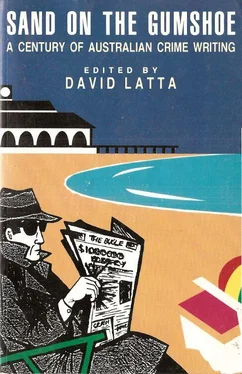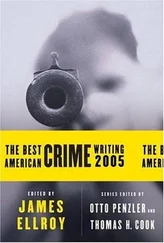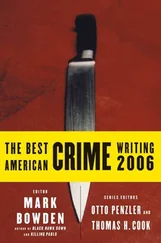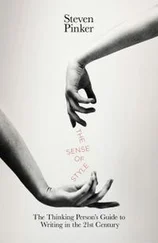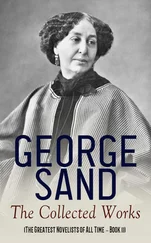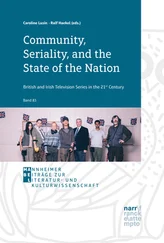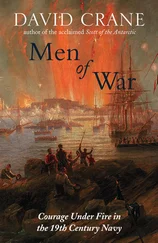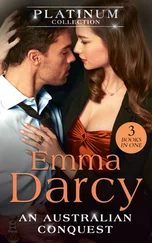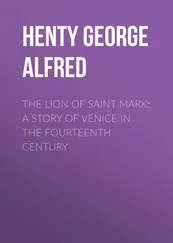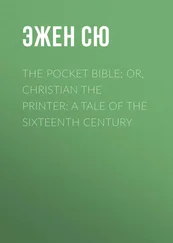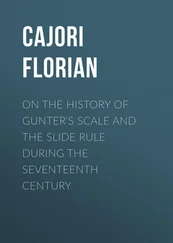David Latta - Sand on the Gumshoe - a century of Australian crime writing
Здесь есть возможность читать онлайн «David Latta - Sand on the Gumshoe - a century of Australian crime writing» весь текст электронной книги совершенно бесплатно (целиком полную версию без сокращений). В некоторых случаях можно слушать аудио, скачать через торрент в формате fb2 и присутствует краткое содержание. Жанр: Детектив, на английском языке. Описание произведения, (предисловие) а так же отзывы посетителей доступны на портале библиотеки ЛибКат.
- Название:Sand on the Gumshoe: a century of Australian crime writing
- Автор:
- Жанр:
- Год:неизвестен
- ISBN:нет данных
- Рейтинг книги:5 / 5. Голосов: 1
-
Избранное:Добавить в избранное
- Отзывы:
-
Ваша оценка:
- 100
- 1
- 2
- 3
- 4
- 5
Sand on the Gumshoe: a century of Australian crime writing: краткое содержание, описание и аннотация
Предлагаем к чтению аннотацию, описание, краткое содержание или предисловие (зависит от того, что написал сам автор книги «Sand on the Gumshoe: a century of Australian crime writing»). Если вы не нашли необходимую информацию о книге — напишите в комментариях, мы постараемся отыскать её.
Sand on the Gumshoe: a century of Australian crime writing — читать онлайн бесплатно полную книгу (весь текст) целиком
Ниже представлен текст книги, разбитый по страницам. Система сохранения места последней прочитанной страницы, позволяет с удобством читать онлайн бесплатно книгу «Sand on the Gumshoe: a century of Australian crime writing», без необходимости каждый раз заново искать на чём Вы остановились. Поставьте закладку, и сможете в любой момент перейти на страницу, на которой закончили чтение.
Интервал:
Закладка:
Whether this surprisingly large crop of crime novelists of the 1950s and 60s deserve to be obscure as they are today is debatable. One author who very certainly does is Dezil Batchelor, a sporting commentator of the 1930s who tried his hand at writing thrillers. His The Test Match Murder (Sydney, Angus & Robertson, 1936) is an unintentionally hilarious slice of homegrown gimmickry. John Franklyn, captain of the English Test team, falls dead whilst approaching the crease at the Sydney Cricket Ground. A pin smeared with poison and planted in a batting glove is the murder weapon. Owen Brownlow, a radio sports commentator, witnesses the scene and calls on the assistance of his brother Latimer, a brilliant amateur detective. Latimer confounds the slow-witted police with his forensic genius and solves the crime.
Batchelor had read a little too much Bulldog Drummond and Sexton Blake between overs. He breathlessly established Latimer’s credentials as the man who ‘solved the hideous enigma of the headless ballet dancer which had baffled the united forces of the Paris Sûreté’. As if this wasn’t enough, the last time Latimer ‘had dragged him into criminal investigation, Owen had reached the penultimate chapter of the story facing the hatchet man of a Chinese tong with a time machine tethered to his left ankle’.
As a crime writer, Batchelor was a first rate cricket commentator and the most pleasant feature of The Test Match Murder is its cricketing atmosphere. After this gem he kept to sport for quite a few years and it wasn’t until the late 1950s that he returned to novels. A few, like Everything Happens to Hector (London, Heinemann, 1958) and The Man Who Loved Chocolates (London, Heinemann, 1961) were mysteries, although others, including For What We Are About To Receive (London, Herbert Jenkins, 1964) and The Delicate Flower (London, Herbert Jenkins, 1965), were mannered comedies in the English tradition. Thankfully his later crime stories are now so rare as to be virtually unknown.
Despite Batchelor’s very British evocation of the gentleman amateur and Wright’s lady sleuths, the fascination with the conventionally employed police detective, which characterised Australian authors from Mrs Fortune in the 1860s onwards, continued dominant.
Paul McGuire, foreign correspondent, diplomat and Australia ’s first ambassador to Italy, neatly packaged a career as a crime novelist into the decades from 1931. His 16 novels began with Murder in Borstal (London, Skeffington, 1931 as The Black Rose Murder, New York, Bretano 1932) and included the quite brilliant Burial Service (London, Heinemann 1938 as A Funeral in Eden, New York, Morrow, 1938) and The Spanish Steps (London, Heinemann 1940 as Enter Three Witches, New York, Morrow, 1940). McGuire’s series characters, Chief Inspector Cummings and Inspector Fillinger, were London detectives who never ventured closer to Australia than the English Channel.
In the development of Australian crime writing, it was not until quite late that thrillers became an established form. Paul Brickhill, famous for his classic books of World War II, The Dam Busters (London, Evans Brothers, 1951; New York, Ballantine 1965), The Great Escape (London, Faber & Faber, 1951) and Reach for the Sky (London, Collins, 1954), turned overseas for what was then a very contemporary plot. His entirely gripping thriller, The Deadline (Sydney and London, Collins, 1962; as War of Nerves, New York, Morrow, 1963), is set in Paris where an Australian tourist who has witnessed the murder of a French politician strives to avoid the attentions of an Algerian assassin.
Ian Hamilton also broke the traditional mould and reflected the changing shape of popular culture with a few mysteries starring Pete Heysen, a television journalist. Heysen’s first outing was The Persecutor (London, Constable, 1965) and The Man With The Brown Paper Face (London, Constable, and Philadelphia, Lippincott, 1967). Hamilton was clearly comfortable with the American ‘hip’ style and seemed more at ease with the then current spate of United States television adventures and caper movies than the time-worn conventions of police procedurals. There was a cop in Hamilton ’s novels, one Detective-Sergeant Brockhurst of the remarkably populous Sydney C.I.B., but his role was to act as an official foil for Heysen. At best the books are good fun although they have not weathered the years favourably. Re-reading Hamilton is like watching re-runs of television’s The Mod Squad, an exercise in nostalgia that doesn’t seem quite so satisfying the second time around.
The Pulps
Whilst the mainstream publishers kept to the traditional areas of the genre, the police dominance of Australian crime writing was largely broken by the pulp writers. ‘Yellowbacks’ and ‘pulps’, although derisive terms for the working class of publishing, were the heirs of the popular magazines of the nineteenth and early twentieth century and the source of a gradual revolution in Australian crime writing.
The immortal Nick Carter, for example, visited these shores in An Australian Klondike (New York, Street & Smith, 1896). This title was one of no less than 437 in the Carter series written by Frederick van Rensselaer Dey who was engaged in 1891 by Street & Smith to continue the character initiated by John Coryell. An Australian Klondike only used idealised outback settings, for Dey never allowed the trials of either travel or serious research to stand in the way of his feverish production of these dime novels. The fact that he produced all his Nick Carter adventures in just 21 years goes a great way toward explaining his haste.
The most interesting feature of An Australian Klondike is that it is set in the bush, an environment which many Australian writers eschewed. With the exception of Upfield, Courtier, Randolph Bedford, Nancy Graham, Helen Mace, Estelle Thompson and the all too brief career of A.E. Martin, very little crime literature had an exclusively rural setting. It seems the only crime many authors considered worth writing about occurred in the cities. The pulps continued this single minded approach, particularly during the 1950s, when they really started to steam.
Anybody who suggests that there was no production of pulp crime fiction in Australia should look no further than the mass of periodicals and paperback series such as Adam, Man, Cavalier, Male, Detective Fiction, Famous Detective Stories, Leisure Detective, Action Detective and the Shilling Thriller series which prospered in these years.
One of the best was the short-lived Detective Fiction. Published by Frank Johnson it began in 1949 and employed an army of writers producing some remarkably good stories. Frank Walford, crocodile hunter and journalist, had written a stream of popular novels from the 1930s before his work appeared regularly in Detective Fiction. In stories such as ‘The Flame Pearl’, ‘The Spare Parts’ and ‘The Polished Razor’ he featured a series character, Dr Frederick Norman. Other notable writers included the husband and wife team Richard and Alfreda Phillips (‘The Case of Mamie Parish’ and ‘The Case of the Life Sized Doll’) and Norman Way with stories such as ‘You Can’t Be Too Careful’ and ‘Framed’. In addition to Detective Fiction there were other magazines for which the pulp writers toiled furiously.
Of the mass of pulp writers Max Afford was unquestionably the best. In his time Afford was renowned as a famous radio script writer. One of his best known programmes, Danger Unlimited, chronicled the deductive exploits of Jeffrey Blackburn. A former professor of mathematics, Blackburn and his wife Elizabeth, exhibiting just the slightest hint of Nick and Nora Charles, also appeared in Afford’s print writing, notably in such light and enjoyable novels as Blood on His Hands (London, Long, 1936; Sydney, Frank Johnson, 1945,). Set during Melbourne ’s centennary celebrations, it involved the locked room murder of a prominent judge and featured a delightful secondary character in Bertha Fenton, a wisecracking journalist. Afford resurrected the Blackburns for Detective Fiction in ‘The Vanishing Trick’.
Читать дальшеИнтервал:
Закладка:
Похожие книги на «Sand on the Gumshoe: a century of Australian crime writing»
Представляем Вашему вниманию похожие книги на «Sand on the Gumshoe: a century of Australian crime writing» списком для выбора. Мы отобрали схожую по названию и смыслу литературу в надежде предоставить читателям больше вариантов отыскать новые, интересные, ещё непрочитанные произведения.
Обсуждение, отзывы о книге «Sand on the Gumshoe: a century of Australian crime writing» и просто собственные мнения читателей. Оставьте ваши комментарии, напишите, что Вы думаете о произведении, его смысле или главных героях. Укажите что конкретно понравилось, а что нет, и почему Вы так считаете.
